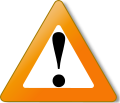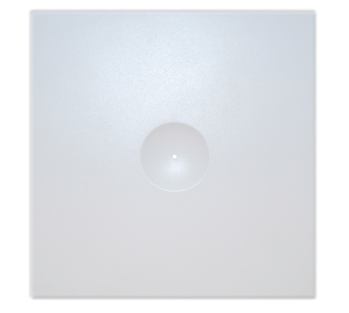Difference between revisions of "IP DECT Base Repeater Wall"
From Zenitel Wiki
(→Contents of the Repeater Programming Kit) |
|||
| Line 1: | Line 1: | ||
{{A}} | {{A}} | ||
| + | |||
| + | {{obsolete}} | ||
| + | |||
| + | {{Note| Zenitel (Stentofon) does not provide any DECT product anymore. The information in this article may be outdated!}} | ||
| + | |||
[[Image:2211050100 RS.jpg|thumb|350px]] | [[Image:2211050100 RS.jpg|thumb|350px]] | ||
| Line 157: | Line 162: | ||
| − | [[Category: | + | [[Category:Discontinued Accessories]] |
Latest revision as of 16:02, 8 November 2021

|
Zenitel (Stentofon) does not provide any DECT product anymore. The information in this article may be outdated! |
Contents
Description
The repeater is a building block used to extend the coverage area in a system. The repeater does not increase the number of traffic channels. However, it provides a larger physical spreading of the traffic channels and thereby increases the coverage area established with the base stations. The repeater can be used to extend the coverage area in a wireless radio synchronization solution, where it serves as a receiver and transmitter in relaying radio signals. Depending on the repeater type it can be mounted either on the wall or on the ceiling. the wireless repeater is used in areas with limited voice traffic, where cabling is difficult. The repeater is available with 4 voice channels. It is wireless and does not need a physical connection to the wireless server, making it very easy to install. Up to three repeaters can be placed in cascade formation directing coverage in a certain direction. If the radio environment is difficult , one should avoid installing repeaters. The repeaters can be supplied with an external antenna making it possible to create radio coverage in a remote area without cabling to the rest of the intsallation.
The repeater is also termed WRFP (Wireless Radio Fixed Part).
LED Indicator
The repeater has one LED indicator describing the repeater operations. The LED is off when the repeater is not powered. When the LED flashes after the repeater has been powered, sync has still not been established. As soon as sync has been established, the LED is on. Each time a handset connects to the repeater, the LED flashes briefly. Each time a handset makes a handover to a repeater, the LED flashes briefly.
Repeater Type and part number
The repeater contains RF circuitry that is compliant with the local band standards: UPCS, DECT, or ETSI DECT. The wall mounted repeater is available as a full slot repeater. A full slot repeater covers four simultaneous speech channels. These channels are borrowed from the attached base station, and are not additional channels to the total number of channels in the system.
| Type: | Part Number: |
|---|---|
| Repeater Wall | 221 105 0100 |
| Repeater Ceiling | 221 105 0110 |
Programming Software
The application software for programming the repeater and software downloads to the repeater is called ServiceTool. The ServiceTool application is available as a download here.
Installation
Before beginning the installation, determine the position for best coverage of the repeater. The coverage depends on the construction of the building, architecture, and the type of building materials.
Environmental requirements
- Avoid installing repeaters on large concrete or marble columns because these columns affect radio coverage. If possible, place the repeaters at a minimum of 1 meter or 3.3 feet from these types of columns.
- Avoid installing a repeater with the antenna housings near metal objects. Be careful not to damage existing wiring or panels.
- Avoid positioning repeaters in ducts, plenums or hollow spaces used to transport environmental air except where the duct , plenum or hollow space is created by a suspended ceiling having lay-in panels.
- Avoid positioning repeaters directly on metal surfaces. If possible place the repeaters at a minimum of 1 meter or 3.3 feet from these types of surfaces.
- Avoid positioning repeaters behind furniture.
- Only position repeaters where the signal is needed.
- The installation area must be clean, free of traffic and excess dust, dry, and well ventilated.
- The installation area must be whitin the temperature ranges of 10°C/50°F and 40°C/104°F.
- The installation area must have non-condensing relative humidity between 20% and 80%.
The repeater does not add channels, it only adds additional coverage area. The repeater can be registered on the system:
- when placed within the coverage area of a base station
- when placed within the coverage area of an already installed repeater
For best coverage, the repeater must be mounted vertically on walls.
The repeater must not be installed at any angle other than vertical. If the repeater is placed upside-down, the coverage area of the repeater is decreased by 40% - 50% and it may not transmit or receive efficiently.
To install and mount the repeater
- Connect the power supply cable into the RJ11 connector at the bottom of the repeater.
- Mount the repeater onto the wall using the screws accompanying the repeater.
Recording the Installation Information
After completing the installation of the repeaters, record the location of each repeater.
Checking Indicators
Verify that the repeater LED indicator is steadily on, indicating that the repeater is functioning.
Powering the repeater
Power Options
The power supply for the repeater is 9VDC, 300mA.
| Type: | Part Number: |
|---|---|
| Power Supply | 221 105 0200 |
Programming a Repeater with the Programming Kit
Contents of the Repeater Programming Kit
- Splitter
- Cable
For programming the repeater you also need the ServiceTool programming software and the power supply for the repeater. ServiceTool is not part of the Repeater Programming Kit but is available as a download here. The power supply for the repeater os ordered separately as part number 221 105 0200.
Setting up the Hardware for Repeater Programming
- 1. Unplug the repeater power supply and insert the splitter.
- 2. Connect the repeater power supply to the splitter and the mains. The LED should start to flash.
- 3. Ensure that you have the appropriate power supply for the local environments.
- 4. Connect the serial cable to the splitter and COM port of your computer. The repeater is now ready for programming via ServiceTool.
The order sequence (steps 1, 2 and 3) of the setup should be followed.
Programming the Repeater with ServiceTool
ServiceTool is the application software installed on your computer that you use for repeater programmming and software downloading to the repeater. ServiceTool identifies the type of repeater, and with this software it is possbile to program the repeater to connect to the DECT radio Infrastructure solutions. Before you starts programming the repeater, ensure that the repeater is connected to the computer and the mains. In a single-cell solution, the numbers assigned to the repeaters must be between 2 and 7. The nummber of the base station is set to 1 by default. In a Multi-cell solution, the numbering of the base stations and repeaters has to follow the numbering in the table below:
| Base Station | Repeater 1 | Repeater 2 | Repeater 3 |
|---|---|---|---|
| 0 | 64 | 128 | 192 |
| 1 | 65 | 129 | 193 |
| 2 | 66 | 130 | 194 |
| I | I | I | I |
| 63 | 127 | 191 | 255 |
| 64 | 128 | 192 | 0 |
| I | I | I | I |
| 127 | 191 | 255 | 63 |
| 128 | 192 | 0 | 64 |
| I | I | I | I |
| 191 | 255 | 63 | 127 |
| 192 | 0 | 64 | 128 |
| I | I | I | I |
| 255 | 63 | 127 | 191 |
Example of a Normal Base Station/Repeater Configuration:
| Numbering of base stations and repeaters in a normal configuration | |
|---|---|
| First Repeater | Base station number + 64 Base to synchronize on: base station number |
| Second repeater | Base station number + 128 Base to synchronize on: base station number |
| Third repeater | Base station number + 192 Base to synchronize on: base station number |
Example of Repeater Jump Configuration:
| Numbering of repeaters in a repeater jump configuration | |
|---|---|
| First Repeater in chain | Base station number + 64 Base to synchronize on: base station number |
| Second repeater in chain | Base station number + 128 Base to synchronize on: Number of previous repeater |
| Third repeater in chain | Base station number + 192 Base to synchronize on: Number of previous repeater |
Specifications
| Radio Coverage Area | Up to 150 meters outdoors |
| Maximum number of simultaneous calls | 4 |
| Size (WxHxD) | 100 x 100 x 38mm |
| Weight | 0.12kg |


